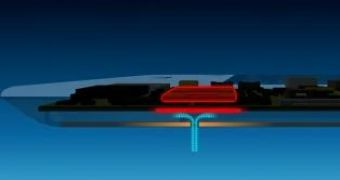Designing a slim portable computer system to provide the necessary computing power, while at the same time, remaining cool enough so it can allow users to take full advantage of its functionality can be a rather hard task to accomplish.
One of the main reasons for which there aren't more portable systems making use of the design concept on Apple' MacBook Air is that designing such a system imposes some difficulties, especially when you get to the cooling factor. However, the leading chip maker, Intel, has recently revealed a new technology that could soon allow more systems vendors to built their own MacBook Air or Voodoo Envy 133 competitors.
“When you design a very thin system, cooling the skin is a very big challenge,” said Mooly Eden, general manager of Intel's Mobile Platforms Group, speaking at the Intel Developer Forum (IDF) in Taipei this week. "If you put [a laptop] on your lap, it can feel very uncomfortable. Very hot.”
Trying to demonstrate the heating issue with thin designs for portable computer systems, Eden showed an animation of a jet engine. The jet engine was compared with a laptop, as both can get very hot when operational. However, unlike the laptop, the jet engine uses a laminar air flow cooling system that keeps the engine heat away from the wing, where the fuel is. Laminar flow is when a fluid (or air, in the case of the jet engine) flows in parallel layers.
Intel demonstrated a cooling system designed for the skin of a laptop, which was based on a similar laminar air flow technology that is used for jet engines. “We are licensing it to our customers so they can keep making thinner and thinner laptops,” Eden said.
The technology demonstrated by Intel could soon allow portable computer systems to coolly sit in the user's lap.

 14 DAY TRIAL //
14 DAY TRIAL //